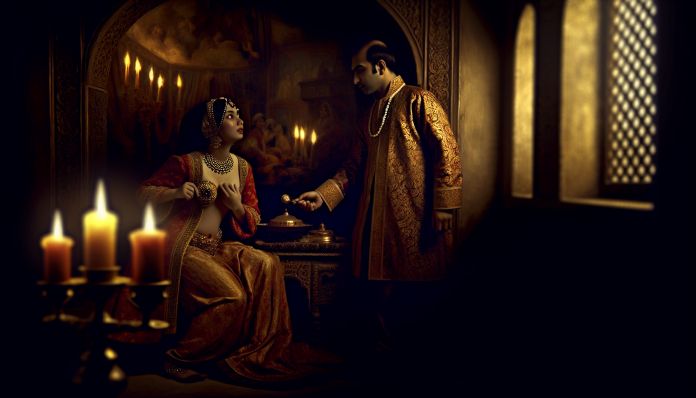Introduction
The 18th century was a time of remarkable excess, opulence, and moral ambiguity for European royals, culminating in a series of salacious scandals that captured the public’s imagination. Among the most notorious was the affair between King Louis XV of France and the glamorous mistress Madame de Pompadour, whose presence influenced not only the arts and fashion of the time but also political decisions. During an era where public morality was strictly tied to aristocratic virtue, their relationship challenged the prevailing norms and laid bare the intimate intrigues behind palace doors.
The 18th century was characterized by a rigid class structure and a set of moral codes that dictated acceptable behavior for those in power. A scandal involving royal figures was not merely a personal affair; it often had sweeping implications for political alliances and public support.
The Scandal
King Louis XV’s affair with Madame de Pompadour began around 1745, when he summoned her to the palace at Versailles. Known for her beauty and intelligence, she quickly became a favorite, but their liaison was not without controversy. As the King indulged in lavish displays of affection and extravagant gifts for his mistress, tensions brewed among the court, which was rife with jealousy and intrigue.
One of the most scandalous factors of their affair was Madame de Pompadour’s significant role in governance. She was not merely a passive participant; she actively influenced the King’s decisions on matters of state, from military strategies to patronage of the arts. This blurred the lines of propriety and power, igniting fury among those who believed her position compromised the integrity of the monarchy.
The ongoing affair was fodder for pamphleteers who produced scandalous reports about the pair, further sensationalizing their relationship. Notable was a public pamphlet titled Le Secret de la Pompadour, which detailed the scandalous lives of both the King and his mistress, painting them as symbols of decadence. Quotes from the time reflect the shocked sentiment: “What more can this king take without shame? He has sold his soul to a common woman!”
Moral and Cultural Analysis
The societal reaction to Louis XV and Madame de Pompadour’s affair was a complex tapestry of admiration and disdain. While many courtiers envied Pompadour’s influence and lifestyle, commoners often viewed the relationship as emblematic of the larger disconnect between the monarchy and the populace. This affair fueled discontent leading to the French Revolution just a few decades later.
Consequences for both parties were mixed and revealing. While Louis XV maintained power, Madame de Pompadour grew more controversial, facing hostility from rival factions. By the end of her life, though she secured significant cultural patronage, her legacy was tarnished by whispers of her manipulative power over a despised King.
In today’s context, the public response would likely focus on issues of consent and power dynamics, scrutinizing the ethical implications of an affair intertwined with political influence. Social media may have amplified the scandal further, leading to debates on the commodification of intimacy, privilege, and the public’s right to judge the personal lives of those in power. The double standards present then would also be starkly highlighted, with discussions on gender roles and accountability rising to the forefront.
In conclusion, the scandal between King Louis XV and Madame de Pompadour remains a fascinating chapter in royal history, echoing with themes that continue to resonate in modern discussions about power, sex, and morality. As history shows, the private lives of the powerful have always been a mirror reflecting the anxieties and desires of society at large.

